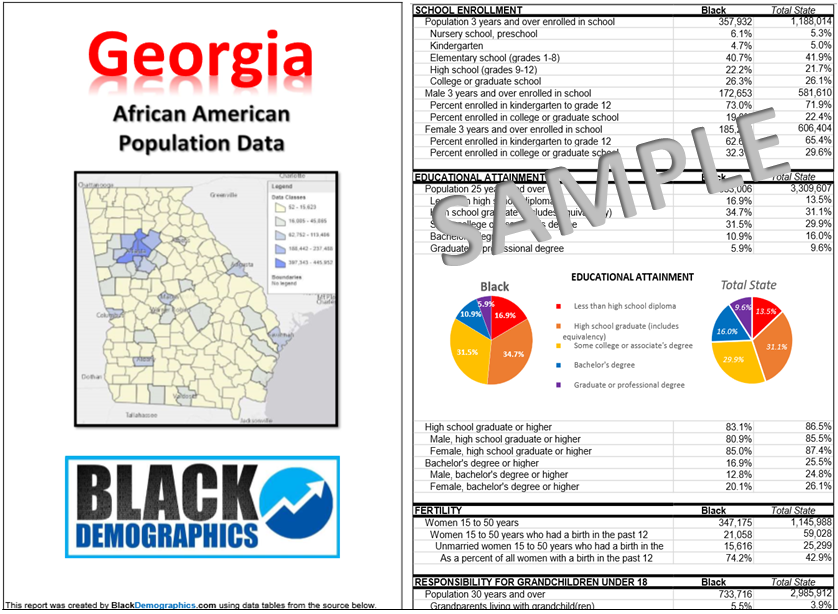Georgia Black Population
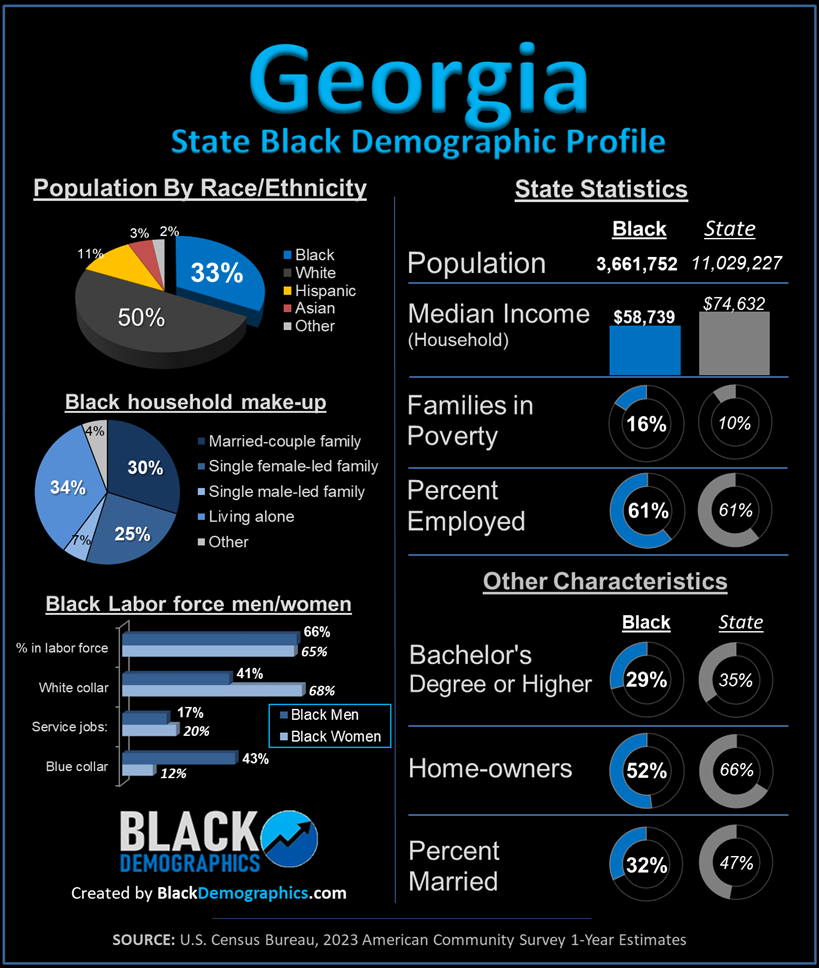
| Metro | BLACK POPULATION |
| Atlanta | 2,287,049 |
| Augusta | 232,703 |
| Columbus | 142,784 |
| Savannah | 143,976 |
| Macon | 109,777 |
| Albany | 79,234 |
| Warner Robins | 73,313 |
| Valdosta | 54,389 |
| Athens | 43,781 |
| Hinesville | 36,836 |
| Brunswick | 26,854 |
POPULATION
In 2023, Georgia maintains a significant Black population, making it one of the states with the highest percentage of African Americans in the United States. According to 2023 census data, the Black population in Georgia was around 3,661,752, which accounts for approximately 33% of the state’s total population. This includes those who identify as Black and those who identify as Black mixed with another race.
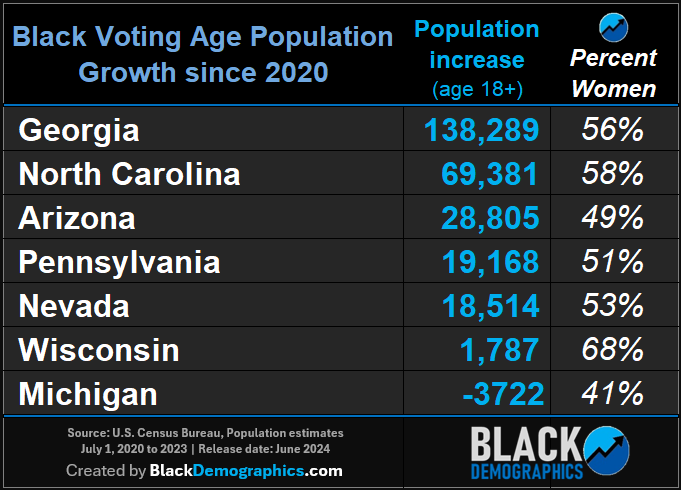
Georgia experienced the largest increase, adding 138,289 Black voting-age individuals, with women making up 56% of this growth. The Black population percentage in Georgia slightly rose from 32.0% in 2020 to 32.5% in 2023, underscoring the state’s growing diversity and its potential political impact.
-
When Parents Die Too Early: Racial Disparities in Parental Loss
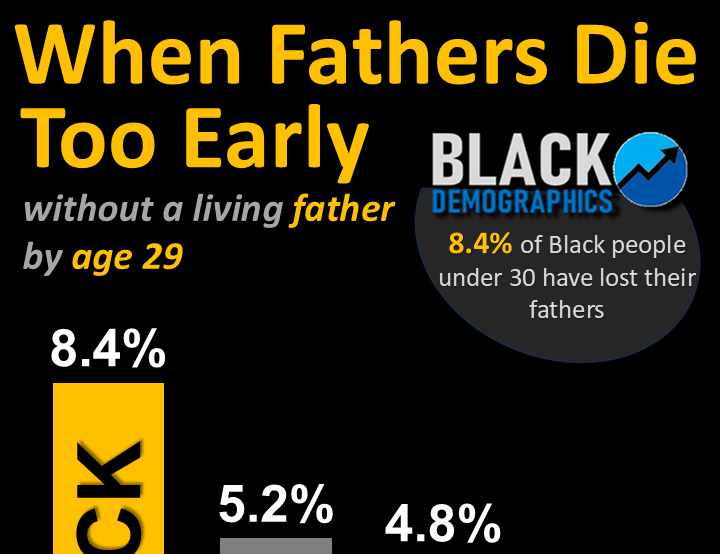
According to data from the U.S. Census Bureau’s 2022 Survey of Income and Program Participation (SIPP), 8.4% of Black Americans aged 0–29 have lost their fathers — the highest rate among all racial and ethnic groups. These numbers highlight a quiet but deeply consequential reality: Black children and young adults are more likely to experience… READ MORE
PAST GROWTH
Between 1990 and 2020, the Black population in Georgia more than doubled, growing from 1.7 million to over 3.4 million. This growth has been driven by both natural increase and in-migration from other states. As the African American population continues to grow, it has contributed to the political, economic, and cultural landscape of Georgia.
A substantial proportion of Georgia’s African American population resides in the Atlanta metropolitan area, where they make up 50% of the city’s population and 34% of the metro population. Other urban areas, such as Augusta, Columbus, Macon, and Savannah, also host significant Black populations. Additionally, there are numerous Black residents living in smaller cities, towns, and rural areas across the state.
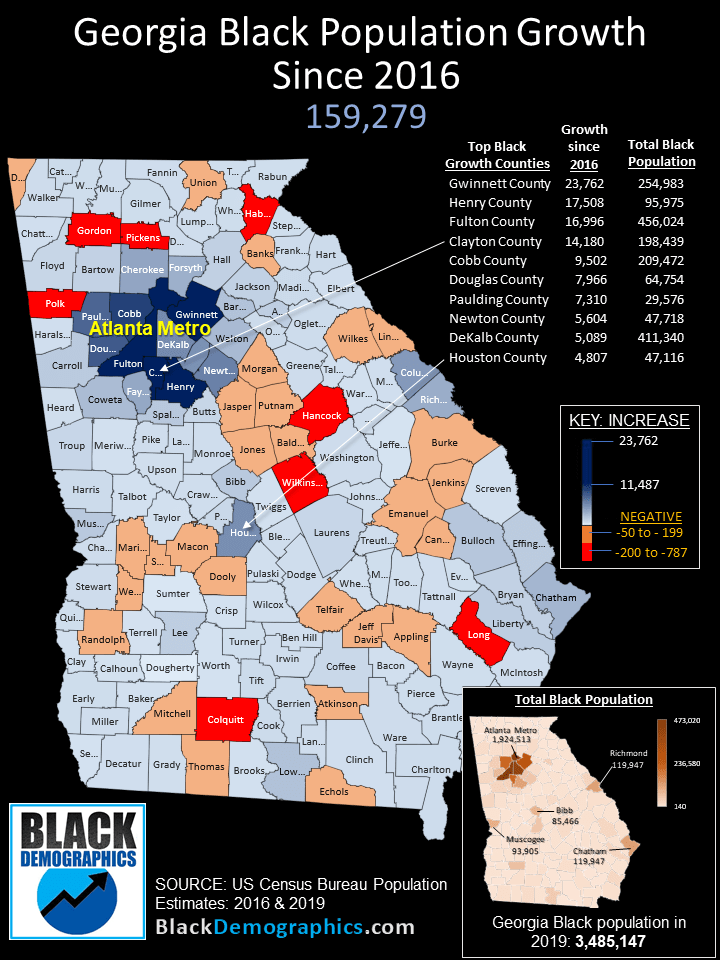
Georgia has experienced a reversal of the Great Migration trend, with a significant number of African Americans returning to the state from the North and the West. This phenomenon, known as the “New Great Migration” or the “Reverse Great Migration,” has led to a resurgence of Black communities in the state, particularly in urban areas like Atlanta. This return migration has been fueled by factors such as affordable housing, job opportunities, and cultural connections to the region.
Black residents have made significant strides in local and state politics, with notable examples like Stacey Abrams, who has become a prominent political figure in the state and nationally. Additionally, the city of Atlanta has emerged as a major center for Black entrepreneurship, entertainment, and arts, with a thriving music scene that has produced influential artists and contributed to the development of various genres, such as hip-hop and R&B.
HISTORY
The presence of African Americans in Georgia dates back to the 1700s when the region was a British colony. At the time, the Black population was mainly composed of enslaved Africans who were brought to the area to work on plantations. By the end of the 18th century, the Black population in Georgia had grown significantly, with enslaved people comprising approximately 44% of the state’s total population.
Following the Civil War and the subsequent emancipation of enslaved people, Georgia’s Black population continued to grow. Many African Americans remained in the state to work as sharecroppers or tenant farmers. During the Great Migration in the early 20th century, a large number of Black residents left the South, including Georgia, in search of better opportunities in the industrial North. However, Georgia’s Black population still experienced growth during this time, reaching approximately 1.2 million by 1940.


